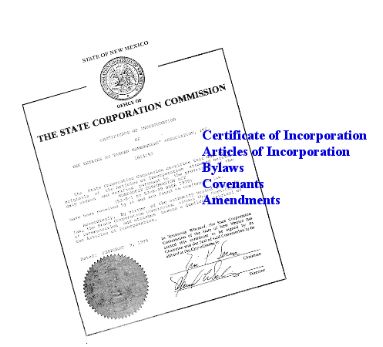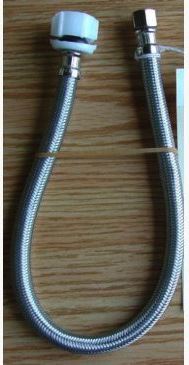
If you wish to pass some information to others in the neighborhood, contact
EstatesatTanoan@aol.com
and the information will be posted on this webpage.
We cannot post advertisements or personal messages.
The Homeowner Association Act, passed by the State Legislature applies to all HOA residents
A person selling a lot that is subject to an association shall provide a disclosure certificate that states that the lot is located within a development that is subject to an association.
A seller or the seller's agent shall submit a written request to the HOA and shall obtain a disclosure certificate from the association and provide it to the purchaser no later than seven days before closing.
Along with the disclosure certificate, the seller provides the prospective buyer with the current HOA financial report and a copy of the bylaws and covenants..
Effective January 1, 2026, the transfer fee for the documents will increase to $200.00. The costs that are being incurred to complete the above requirements on behalf of residents have made the increase necessary.
________________________________________________________________

We have 65 residents using TxtAlert in The Estates at Tanoan
If you need the instructions to join TxtAlert with the rest of the neighborhood,
please contact estatesattanoan@aol.com
______________________________________________________________
Document Package available to Residents
You can obtain a copy of HOA documents which will be sent to prospective buyers of a home in
The Estates at Tanoan subdivision
under the provisions of the new Homeowner Association Act.

It’s available to you for the costs of printing and mailing.
Just send a check for $25 (payable to The Estates at Tanoan) to:
Kim Elliott, The Estates at Tanoan
PO Box 91262
Albuquerque, NM 87199
She’ll mail the booklet to you when printed copies are available.
______________________________________________________________
Information requested at our annual meeting


Here are self-help recommendations from Animal Control:
• Regular leash walks
Provide your dog with mental and physical stimulation so the animal is calmer in general and less likely to seek objectionable activities. Walking also allows the pet a chance for social interaction.
• Rain on his parade
To remind your dog that his noise is not appreciated, give him a short blast of water with a squirt bottle. It's best to aim for the body and not the face. When the dog stops noise, praise the dog immediately.
• Use a chew toy
Your animal will have a hard time making noise if his mouth is busy chewing. Chewing is a natural stress release for animals and an occupier of time. If you're going to be gone, give your animal a favorite chew toy just before you leave. Certain toys allow for the addition of peanut butter, possibly making them more desirable to your dog.
• A soda can with pebbles
Shaking a soda can filled with pebbles has an effect on both dogs and cats that is the pet equivalent of running your fingernails down a blackboard. Put some pebbles or small coins in an empty soda can and tape the opening shut. If the noisy animal doesn't respond to the command to be quiet, shake the can a couple of times. Your pet won't like the sound, and might stop what it is doing when the sound occurs. When your pet stops making noise, praise the pet immediately.
• Bring the pet indoors
If your animal sleeps outside and simply won't stay quiet throughout the night, it might be best to bring the pet indoors.
• Special collars
An animal trainer might recommend a no-noise collar, which delivers a squirt of citronella, a high frequency sound, or a light shock when your animal makes noise. Some collars go off immediately, while others allow the animal to make noise a few times before being activated. Be very selective. An animal training expert can help you choose the right size for your pet. Some collars can be extremely useful, but you need to work with someone who can help you get a good collar and training. Pet supply stores and trainers offer these specialized collars.
• Know when to change strategies
Sometimes, people don't know when to quit using a particular approach. They might keep doing the same thing for months, even though it's not working. If there is not improvement within three to five days, try a different technique.
If it’s not your dog and you have tried to resolve the problem with a neighbor
You can call 311 or fill out an online form. A letter will be sent to the owner, giving a seven-day notice to resolve the problem.
________________________________________________________________
Toilet Supply Line failures
The neighborhood has had 2 3 instances of failure of toilet water supply lines which resulted in significant water damage in the houses. Some online research has found that, since 2010, there have been numerous reports of failure occurring at the plastic nut on water supply lines at the bottom of the toilet tank. The failures typically occur between one and five years after installation. The plastic of these nuts tends to be a low grade polyacetal material and often shows significant porosity and evidence of generally poor injection molding practices. In some cases the plastic nuts may also have been over tightened, even by experienced plumbers, which can lead to failure. More recently manufactured water supply lines are said to use better quality reinforced plastics.
According to one forensic insurance investigator, “These are generally fittings (hoses) from wholesale plumbing suppliers, and installed by plumbers in new homes or recent renovations. So there could be entire subdivisions built in the past decade where the owners should replace toilet hoses.”

There is a contributing factor in our neighborhood. In a past conversation with the WUA, we were told that we are at the bottom of a water distribution zone. They said it begins in the foothills and ends at Eubank. The City supplies 50 psi to homes in the foothills and the pressure in our neighborhood can measure close to 100 psi because we are at the low end of the zone. If you are concerned, you should have your house checked with a water pressure gauge -- contact a professional plumber (the HOA can loan you such a gauge). High water pressure is bad for water lines, connections, and valves, etc. A solution to this problem is to install a whole-house pressure regulator which will maintain water pressure at 50 - 55 psi.
(This information is being posted at the request of several residents. Remember, there can be other reasons for plumbing failure)
 --Return to Newsletter
--Return to Newsletter






 --Return to Newsletter
--Return to Newsletter